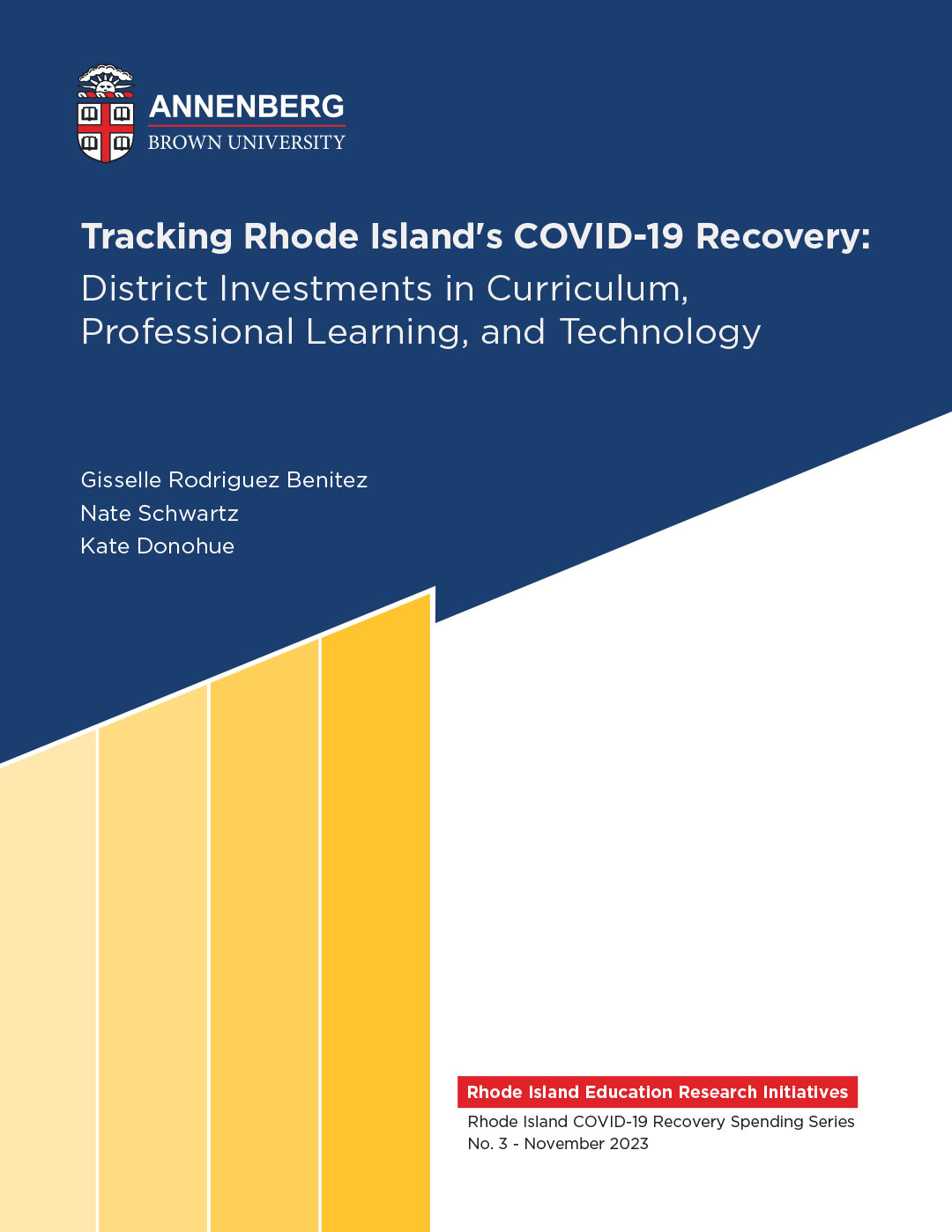In a previous brief, we detailed Rhode Island school districts’ use of federal recovery funds for spending on student-facing and administrative personnel. While personnel spending was by far the largest category of ESSER (the Elementary and Secondary School Emergency Relief Fund), district spending also spiked in other key areas. This brief focuses on the ways that ESSER dollars changed district contracting and purchases—specifically how districts have shifted spending in curriculum, professional development, and technology, as a result of the flexibility provided by ESSER funding.
Districts used ESSER funds to increase spending on these key goods and services far above the pre-pandemic averages. While districts increased total expenditures by 16% in the 2021-22 school year, they increased spending in curriculum, technology, and professional development by 66% on average, with some districts more than tripling their spending.
OUR ANALYSIS HIGHLIGHTS THREE KEY FINDINGS:
- Districts substantially increased curriculum spending, using the new federal funds in part to respond to state curriculum mandates passed just before the pandemic.
- Districts tripled spending on external professional development providers, with the largest increases in urban core districts for services focused on early literacy and multilingual learners.
- Districts across the state used ESSER funds to increase technology spending, significantly increasing the quality and availability of individual student devices.
This brief adds to a broader body of work exploring the first two years of ESSER spending. It contributes to the evidence suggesting that districts in Rhode Island faced spending constraints that forced them to spend largely on existing initiatives and staff, as opposed to the new hires or programs that were proposed in initial budget submissions. Our previous brief showed that ESSER personnel funding was largely used to supplement existing staff pay rather than hire new employees. In this brief, we find that districts spent considerable sums on external trainings, coaching, and instructional materials aimed at building capability among existing staff members. These investments in materials and services have the potential to serve as long-term investments that create payoffs that endure beyond the ESSER funding cutoff in 2024; they also represent large bets and shifts in spending patterns that should be tracked and evaluated to monitor their effects over time.
